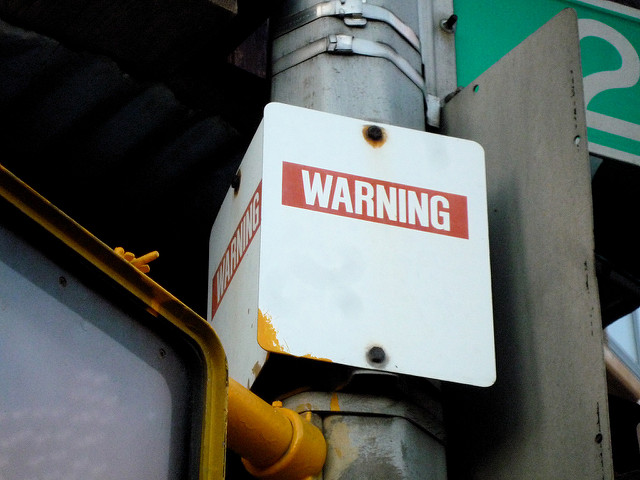Since the University of Chicago sent a letter to all incoming students informing them that they wouldn’t receive trigger warnings, the concept has been debated within and outside of higher education. In fact, it has probably been debated more than many higher education problems that are far more prevalent. In today’s post, I will answer the question: What are trigger warnings and why all the fuss?

When I teach the History of Higher Education, I have the students read the Charter and Statutes of William and Mary. The text is dense with hard to understand language. Before I have them read it, I warn them that largely because of the language that it will probably be the hardest thing that we will read in class. I also tell them it is pretty dry, but there are some key themes that I want them to gather.
So is this a trigger warning?
Not exactly, but the concept is similar.
Trigger warnings are when professors prepare students for potentially disturbing readings or discussions by alerting them prior to material.
The idea is pretty simple and has been used both inside and outside of the classroom for years.
Here’s how it would work:
Let’s say you’re teaching a class on the philosophy of war. You’re going to be talking about civilian deaths and whether this makes war unethical.
You are going to be showing historical pictures of civilians that have been killed in World War II and Vietnam.
Before showing the pictures, you let the students know so they can prepare themselves.
This way if you have someone who may be disturbed by the images, a combat veteran for example, they have a chance to prepare themselves and manage their reaction.
As Kate Manne wrote in The New York Times last year (see, I told you this issue wasn’t new), the goal is have a response to course material based on rational reflection not involuntary reaction based on past experiences.
Those who object to trigger warnings consider them another example of political correctness run amok and further coddling of the millennial generation.
As The Atlantic proclaimed, “In the name of emotional well-being, college students are increasingly demanding protection from words and ideas they don’t like.”
Here’s my problem with the whole debate
It is much ado about nothing!
The Modern Language Association and the College Art Association conducted an online survey of their members with over 800 responses.
Less than 1% of colleges and universities have policies in place about trigger warnings. Only 7.5% of respondents said there was an effort on their campus to require trigger warnings and 15% had students in their courses request warnings.
Of the faculty respondents, only 17% viewed trigger warnings favorable with 45% believing they will have a negative effect on the classroom.
The reality is that much of the media coverage of trigger warnings relies on anecdotes and social media outrage.
Faculty give warnings about their content (23% in the survey), but the professors considered that different from giving trigger warnings.
Why? Because trigger warnings aren’t a major issue.
Yes, some students have complained.
However, there is not a wave of students demanding the additions of trigger warnings.
What’s the reality?
With media exaggeration both in favor and against trigger warnings, what is really going on?
I believe it is quite simple.
When faculty receive legitimate feedback on course content, they briefly mention something about the content before the next time they teach the class.
It isn’t a big deal. Just a quick, “hey, the pictures of civilian deaths are tough to watch. Be prepared that they are pretty graphic.”
I would argue this isn’t much different from me giving my students a heads up about the old language in some of the historical documents that I have them read.
Faculty get feedback from students all the time. Almost always, I have thought about how the class or reading went before I read about it in an evaluation. More often than not, I say, “yep, they are right. I agree on that point.”
Sometimes, I change my practices (giving a heads up on the hard reading) but not always (I still assign the reading despite protests from my students).
Regarding controversial material, students that complain aren’t often those who have had significant personal trauma, which is the primary cause behind trigger warnings.
Instead, faculty are more likely to receive complaints from those that find the material distasteful for political or religious reasons or just because.
In those cases, most professors can decide when they need to say something before a reading and when they don’t need to do so. We can trust their professional judgment when these issues come up from time to time.
There’s no crisis here
Don’t be fooled. There is no crisis of trigger warnings or political correctness loose on our campuses.
If you want to worry about something: worry about public divestment, the decline of tenure and reliance on cheap adjunct labor, increased administrative control, and growing inequality in higher education participation.
The conversation regarding teaching, academic freedom, and the purpose of higher education isn’t bad. We should probably talk more about how to challenge our students thinking and the goals of a collegiate education.
But despite the ink spilled over trigger warnings, there’s simply nothing to see here.

